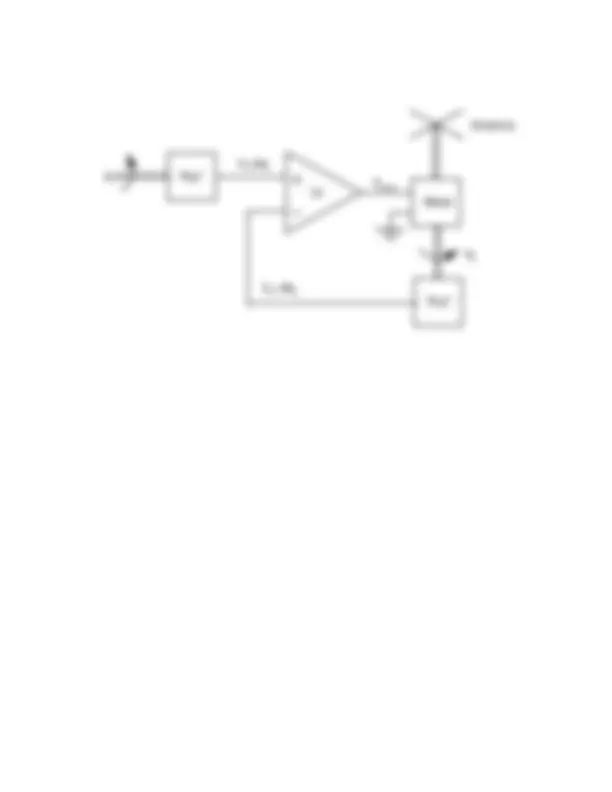



Study with the several resources on Docsity

Earn points by helping other students or get them with a premium plan


Prepare for your exams
Study with the several resources on Docsity

Earn points to download
Earn points by helping other students or get them with a premium plan
Community
Ask the community for help and clear up your study doubts
Discover the best universities in your country according to Docsity users
Free resources
Download our free guides on studying techniques, anxiety management strategies, and thesis advice from Docsity tutors
A homework assignment from the university of portland school of engineering for ee352 electronic circuits ii course. It provides problems related to analyzing a negative feedback servo-system used to rotate a roof-top antenna. Students are required to sketch the closed-loop block diagram, find the transfer function, determine bode plots, hand-plot pole locations, calculate loop gain, and find phase margin and gain margin using matlab.
Typology: Assignments
1 / 2

This page cannot be seen from the preview
Don't miss anything!


The University of Portland School of Engineering
EE Electronic Circuits II HOMEWORK 6
Assigned: Mon, Mar 16, 2009 Due: Wed, Mar 25, 2009
Problems:
Text 8.64. Note, solve for ω 180 by hand using “iteration”.
Text 8.73.
Text 8.81. Use matlab to solve.
A negative feedback servo-system used to rotate a roof-top antenna is schematically shown in the Figure on the reverse page. This is a “position- sensitive” feedback system as discussed in class. The two potentiometers convert the angular positions, θi and θo, to corresponding voltages, Vi and Vo, through the transfer function, V=Kpθ where Kp=5V/rad. The output voltage, Vo, is subtracted from the input voltage, Vi, and the result is multiplied by 10V/V through a gain stage yielding Verror=10(Vi-Vo). Verror then drives the motor. Assume the following: (1) the total Moment of Inertia of the entire output mechanism (antenna, antenna shaft, motor rotor, and potentiometer) is J=2kg-m^2 , (2) the torque provided by the motor is G=10N-m/A multiplied by the armature current, Ia (i.e. τ=GIa=10Ia) and, (3) the motor can be modeled as an armature resistor, Ra=10Ω, in series with an ω- dependent voltage generator known as the “Back-EMF Voltage” where VBEMF=Gω as shown in class.
a) Sketch the closed-loop, negative feedback block diagram which relates θo and θi. Find the closed-loop Transfer Function, Af(s)=θo(s)/θi(s).
b) Determine the Bode Plots of Af(s) using matlab. What is the “characterisic frequency”, ωn, of this electromechancial servo-system?
c) Plot by hand the location of the closed-loop poles of Af(s) in the complex plane (σ vs jω). By inspection, is the system stable? If so, is this system underdamped, overdamped or critically damped?
d) Calculate the Loop Gain, LG(s) of this servo-system. Determine the system’s Phase Margin and Gain Margin using matlab.
Motor
θi
Vi=5θi
Vo=5θo
Antenna
θo
“Pot” Verror
“Pot”